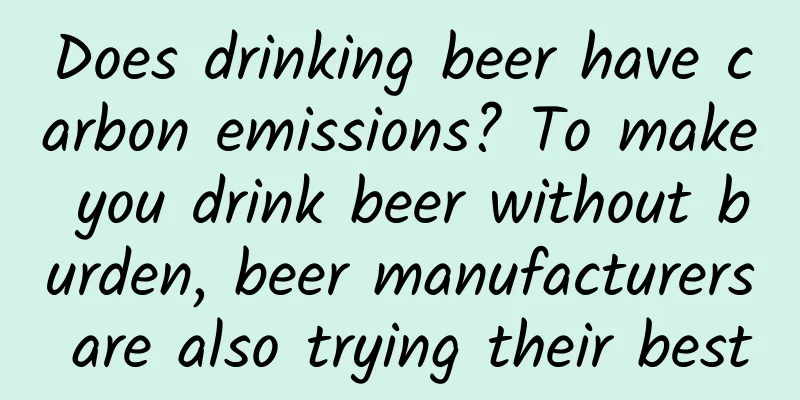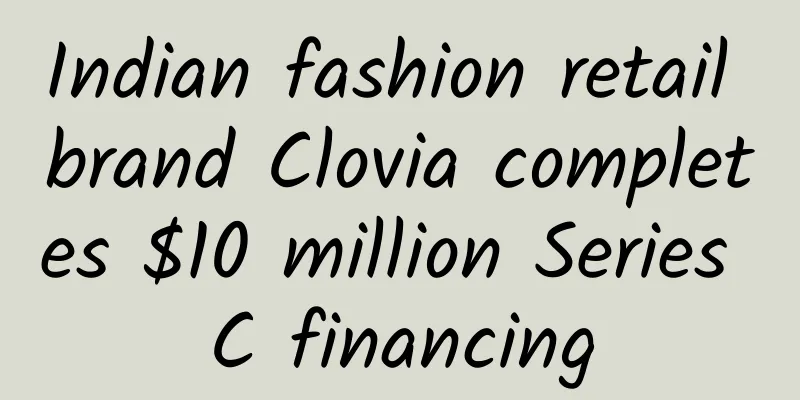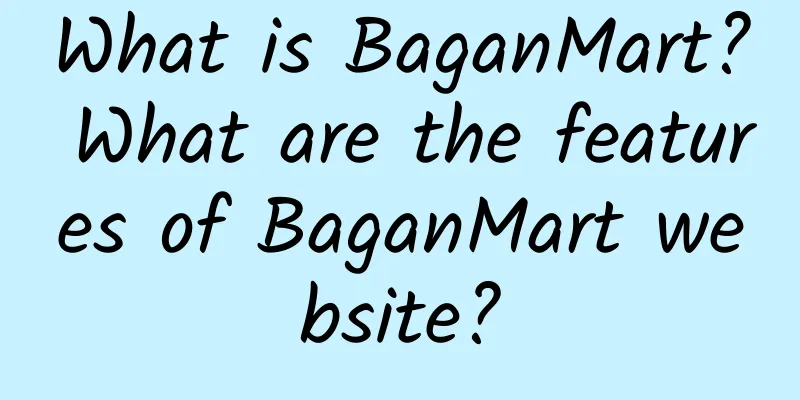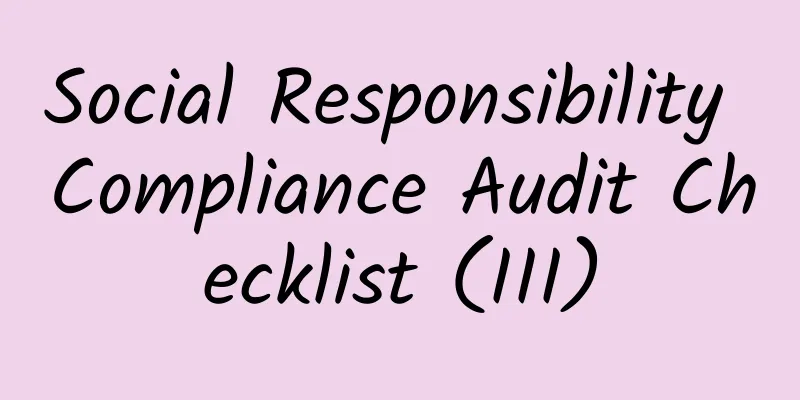Does drinking beer have carbon emissions? To make you drink beer without burden, beer manufacturers are also trying their best

|
“Do we have to pay attention to carbon emissions when drinking beer? Will we be able to have a pleasant conversation in the future?” In the hot summer, chatting with friends, eating meat skewers, eating peanuts and edamame, and drinking a cold beer until late at night is a popular way of entertainment. However, when we enjoy the cool beer in our hands, have we ever thought that they actually emit carbon, just like factories and cars? Today, the reporter will talk about the "carbon" in beer. How much carbon emissions does a glass of beer produce? First of all, we need to understand the production process of beer. Beer is roughly divided into two categories: ale and lager. The raw materials are mostly based on water, malt, hops, etc., and fermented at a certain temperature to produce alcohol and carbon dioxide gas (that is, the bubbles in beer). The difference between the two types of beer lies in the fermentation method, fermentation temperature, yeast type, etc. Ale beer is the popular "craft beer" nowadays. It uses the top fermentation process and the fermentation temperature is 20℃-25℃. Lager beer is the "industrial beer" we come into contact with most in daily life. It uses the bottom fermentation process and the fermentation temperature is usually 10℃-12℃. It can be seen that the fermentation process determines the type and taste of beer and is the most important process in beer production. During the fermentation process, yeast uses the fermentable substances in the wort to carry out life activities, and the product generated by yeast metabolism is beer. In this process, a certain amount of carbon dioxide is required as a raw material for life metabolism activities, but a certain amount of carbon dioxide will also be produced. "Different types of beer have different carbon emissions due to their different fermentation cycles. However, carbon emissions will occur in the production and processing of raw materials, production of packaging materials, transportation of raw materials and packaging materials, industrial production processes, production energy consumption, product distribution and solid waste transportation." A staff member of Tsingtao Brewery Co., Ltd. told reporters in an interview recently. In the 2021 Environmental, Social and Governance Report (hereinafter referred to as the "Report") recently released by Budweiser Asia Pacific, it is mentioned that in 2021, carbon dioxide emissions in the "entire value chain" reached 77.37 kg/hL of production. Based on this calculation, every time we drink 1 liter of beer, 0.77 kg of carbon dioxide is emitted. Under standard conditions, the volume of these carbon dioxides is almost 400 liters. According to data from the National Bureau of Statistics, my country's beer production reached 35.624 million kiloliters in 2021 alone. Moreover, it can be seen from the Budweiser Asia Pacific Report that in the process of beer production, the packaging stage accounts for almost half of the carbon emissions, followed by the carbon emissions from the product cooling stage, which reached 20.9%. Then comes the brewing operation stage, which accounts for 10.8% of carbon emissions. The beer we drink actually has so much carbon emissions? Under the current carbon peak and carbon neutrality goals, do we also have to reduce the carbon content of beer? Will I be able to drink beer peacefully in the future? In fact, facing the dual carbon goals, various wine companies have not only started "routine operations", but also taken a big step in exploring carbon reduction solutions. "We found through the data that carbon emissions from the upstream and downstream supply chains account for 70%." A relevant staff member of Tsingtao Brewery told reporters, "At present, we have piloted a carbon inventory of the entire value chain to find out the carbon emissions of upstream and downstream suppliers. While reducing carbon emissions in our own production process, we also continue to reduce carbon emissions in the entire value chain by influencing upstream and downstream suppliers." According to Tsingtao Beer, Tsingtao Beer has invited qualified third-party certification agencies to conduct greenhouse gas inventory for all its factories one by one, and at the same time, it has worked hard to promote carbon emission reduction in terms of energy structure, energy efficiency, process technology, etc. "We also plan to implement carbon emission inspection training to cultivate our own 'carbon officer' of Tsingtao Beer." In 2021, Tsingtao Beer will pilot a 2.2 MW distributed photovoltaic project in Zaozhuang, which can reduce carbon emissions by nearly 2,000 tons per year after it is put into operation. In addition, Tsingtao Beer also collects and purifies the carbon dioxide produced during the fermentation process and then uses it for production needs. From 2019 to 2021, the carbon dioxide recovered by this measure alone is equivalent to the planting of 3.88 million 30-year-old fir trees (calculated based on the annual absorption of 111 kg of carbon dioxide by a 30-year-old fir tree). Budweiser Asia Pacific, which achieved impressive performance in 2021, also has a lot to look at in terms of carbon reduction. In 2021, Budweiser Asia Pacific will give "environmental, social and governance topics" including "greenhouse gas emissions" the highest level of "high priority" in China, and plans to achieve a 35% reduction in carbon emissions from self-operated businesses and a 25% reduction in carbon emissions from full value by 2025. In 2021, Budweiser Asia Pacific's brewery in Wuhan became the first carbon-neutral brewery in China to receive third-party certification, and 20 breweries have or have signed contracts to install solar energy systems for self-powered electricity. In addition, last year the Budweiser Asia Pacific fleet also deployed 335 green trucks in China, including 30 electric heavy-duty trucks and 5 hydrogen-powered heavy-duty trucks. Coincidentally, China Resources Snow also listed "low-carbon operation" as an issue of "high importance" to the sustainable development of the company. In 2021, China Resources Snow will include the emissions generated by the loss of purchased carbon dioxide as raw materials during the use of beer production, and the methane emissions generated during the anaerobic treatment of beer wastewater into the original statistical scope of greenhouse gas emissions, and completely eliminate coal-fired boilers to achieve zero coal consumption. At the same time, China Resources Snow also found in the study that the carbon footprint of glass bottle products of the same capacity is 80% higher than that of aluminum cans. Therefore, it gradually adjusted its product structure, increased the proportion of aluminum can products, and reduced the use of glass bottles. In 2021, China Resources Snow's use of glass bottles decreased by 3.3% year-on-year, and the use of aluminum cans increased by 4.7% year-on-year. Among the glass bottles used, 80% were recycled from the market. Can you imagine that so many people have worked hard to make you enjoy a glass of cold beer while reducing damage to the environment? Do you suddenly have a deeper understanding of the saying "technology makes life better"? However, I still want to remind everyone: although beer is good, don't drink too much~! Chaowang Consulting and Guidance has been engaged in factory inspection guidance and certification consulting for many years. It has rich experience and connections, is familiar with the process and steps of factory inspection and certification, and can help companies solve certification problems at any time, easily deal with them, and pass them smoothly. Consultation phone: 021-51029391! |
<<: The national carbon market is expected to gradually expand as it turns one year old
>>: What exactly is RAF certification?
Recommend
Advertising has become an essential promotion method for sellers on eBay, Etsy, and Amazon
Today, it’s not enough to simply list an item on ...
How is USA7Express? What are the advantages of USA7Express?
How about USA7Express? USA7Express is a new inter...
Six tips for managing your eBay inventory
Inventory management is one of the biggest challe...
The detailed entry process of FanMart is here
What is FanMart? How to join FanMart? What are th...
eBay new sellers must read: 9 key tips for successful selling on eBay!
Selling items on eBay is a great way to make mone...
How much does it cost to use Fetcher? What are the advantages and disadvantages of Fetcher?
How much does Fetcher cost? Fetcher’s Pricing: Th...
Common fire safety issues and solutions during BSCI factory audits (XI) Building fire protection two-in-one issues
Problem phenomenon: The problem of combining fact...
OHSAS18000 system certification audit scope
Shanghai Chaowang is a company with 15 years of p...
How to register a company logo? How long does it take to register a company logo?
If you want to open a store on Amazon, most peopl...
What is Xike? What services does Xike provide?
What is Xike? Shenzhen Xike Technology Co., Ltd.,...
How to avoid infringement on eBay products?
eBay has zero tolerance for infringing products. ...
What impact does C-TPAT have?
Suppliers face stricter supervision First, as bus...
GS certification--make the product more popular!
GS stands for GeprufteSicherheit (safety certifie...
Newbalance Labor Audit Checklist
Newbalance Labor Audit ChecklistNewbalance Labor ...
How is AiJing Technology? What services does AiJing Technology provide?
How about Aijing Technology? Shanghai Aijing Info...









